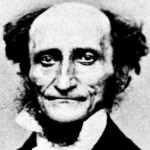The book I am currently working on is an evaluation of the Eastern Orthodox doctrine of theosis from a Lutheran perspective. I make the argument that Lutherans can and should adopt a teaching of theosis, as it is taught in the fathers, Luther’s writings, and our Confessions. The language may make us, as Lutherans, somewhat uneasy, but whatever terminology is utilized, the concept is one that is Biblical and catholic.
Theosis is defined by Norman Russel as “our restoration as persons to integrity and wholeness by participation in Christ through the Holy Spirit, in a process which is initiated in this world through our life of ecclesial communion and moral striving and finds ultimate fulfillment in our union with the Father—all within the broad context of the divine economy.” (Fellow Workers With God, 21)
For the Eastern Orthodox Church, salvation is primarily viewed as participationist, focusing on Christ in us, rather than Christ for us. The Lutheran tradition has tended to promote a soteriology that is predominantly forensic in light of the legal approach taken to the doctrine of justification and the priority of Christ for us. These two conceptions need not be pitted against one another, as if soteriology needs to be either juridical or participationist. Both motifs are present in the writings of Paul, the early fathers, and Luther.
It is my contention that theosis is a helpful and needed approach to salvation, and should be seen as “Christification.” The earliest fathers including Ignatius, Irenaeus, and Athanasius took a Christological approach to the concept of deification. this is apparent in Athanasius’ formula that “God became man so that man might become god.” God took a human nature upon himself, and consequently gives us various attributes of divinity including immortality, incorruptibility and righteousness. This is to be carefully distinguished from the concept of apotheosis which teaches that humans can actually become divine by nature. Later Eastern writers, stemming from the writings of Dionysius the Areopogite, place deification in philosophical categories rather than the more strictly Biblical and less speculative approach of Athanasius. This latter approach has been adopted by the Eastern Orthodox Church, especially by those in the Neo-Palamite school of thought. It is the earlier approach of Irenaeus and Athanasius which comports with a Christological and Biblically oriented theology, rather than Palamism.
Christification is not a replacement of forensic justification as some in the Finnish approach to Luther have argued, but it’s a complimentary reality. The Lutheran scholastic tradition spoke of this concept under the phrase “mystical union.” Adolf Hoenecke is particularly insightful on this subject in his Evangelical Lutheran Dogmatics. He writes,
“The mystical union of the believers with God consists in that the triune God through the Holy Spirit essentially is graciously present in believers, through which those thus united with God not only blessedly rejoice and are filled with comfort and peace but are also made constantly more certain in grace, strengthened in sanctification, and preserved for eternal life.” ELD III, 385
Along with forensic justification, through the imputed righteousness of Christ, God himself also dwells in his people. This divine indwelling is a real-ontic reality as opposed to the Ritschlian concept that it is a unity of will, rather than an actual ontological union. Through this divine indwelling, God grants grace, eternal life, and growth in holiness. Through this union, the believer is continually conformed to the image of Christ. Hoenecke also writes,
“According to these passages the essence of the mystical union is that God according to his substance in a miraculous way is close to the substance of humans and permeates their substance with his essence (Jn 17:21-23), and dwelling in the believers, he so works in them that they are filled with knowledge and all the fullness of God (Eph 3:17-19). When we describe the mystical union as the presence of the divine substance with the substance of humans, we express its intimacy. Two intimate friends cannot be so closely united. With the substance of their souls they are near each other; but God and the believers are in each other. The substance of both touches each other most closely; indeed the divine permeates the human. But self-evidently, every thought of an essential partaking of the believer in the substance of God, every mixing of God and man, every pantheistic notion of deification is far from this.” ELD III, 386
Hoenecke is careful to argue for a real union with God without allowing for a blending of natures, so that the unique character of God is protected. Luther writes similarly in many places, especially in his Galatians commentary. For example:
“But so far as justification is concerned, Christ and I must be so closely attached that He lives in me and I in Him. What a marvelous way of speaking! Because He lives in me, whatever grace, righteousness, life, peace, and salvation there is in me is all Christ’s; nevertheless, it is mine as well, by the cementing and attachment that are through faith, by which we become as one body in the Spirit.” LW 26, 127-128
For Luther, there is no separation of God’s person from his gifts. When he grants us the righteousness of Christ, he grants us Christ himself. This idea is reflected in the Large Catechism,
“But the Creed brings pure grace and makes us righteous and acceptable to God. Through this knowledge we come to love and delight in all the commandments of God because we see here in the Creed how God gives himself completely to us, with all his gifts and power, to help us keep the Ten Commandments: the Father gives us all creation, Christ all his works, the Holy Spirit all his gifts.” (LC II.68)
God grants his gifts including creation, and the work of Christ. Along with such gifts he grants himself, Father, Son, and Holy Spirit. Through this gift, the Christian is able to delight in God’s Law. This union becomes the basis by which Christians grow in their faith, and are daily renewed, killing the old Adam. It is to be noted, however, that the Lutheran approach to this is much less optimistic than the Orthodox, who reach toward a possible goal of sinless perfection prior to one’s eschatological glorification. For Luther, the continual forgiveness of sins is still the most essential aspect of the Christian life, though this does not negate the reality of divine indwelling and the actualization of holiness within the Christian.















